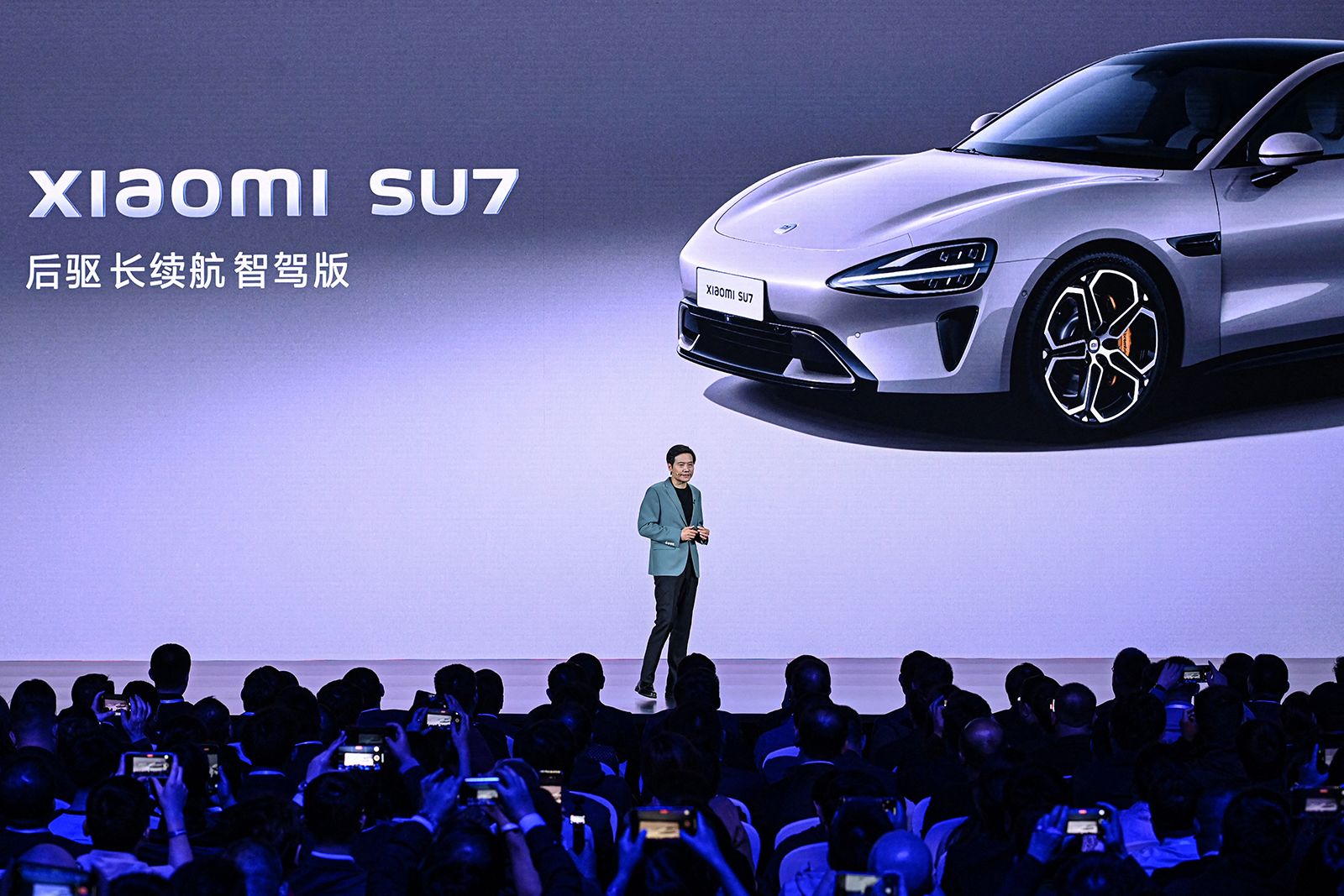Competition in the electric vehicle industry is heating up faster than ever. In one of the boldest moves yet, Xiaomi CEO Lei Jun personally ordered a teardown of a Tesla Model Y to analyze its engineering quality and manufacturing methods. This kind of aggressive benchmarking is not uncommon in the automotive industry, but the level of detail Xiaomi shared gained massive attention. It sent a clear message that the Chinese technology giant is not entering the EV space casually. It is coming in with precision, analysis, and strategic intent.
The Tesla Model Y may be one of the world’s most popular electric SUVs, but Lei Jun’s evaluation reveals that even leading vehicles are not immune to criticism. Xiaomi engineers reportedly examined everything from internal wiring to chassis rigidity. Their objective was not just to admire but to identify where Tesla excels and where improvement is possible. Many analysts believe this teardown is part of Xiaomi’s plan to position its own electric car lineup as a direct rival to Tesla.
Why Xiaomi Chose The Tesla Model Y As A Benchmark
If a company wants to compete in the premium EV market, it must go after the best. The Tesla Model Y represents the current global standard for electric vehicle performance combined with mass production efficiency. It dominates sales charts in multiple countries and has set the bar for aerodynamics, range, and software capability.
By dissecting the Tesla Model Y component by component, Xiaomi gained insight into cost saving techniques and engineering decisions that enable efficient large scale manufacturing. For example, Tesla is known for its gigacasting method, which replaces multiple welded parts with a single giant aluminum casting. Xiaomi is believed to be studying similar techniques to reduce production complexity in its own cars.
Lei Jun reportedly praised certain elements of the Tesla Model Y, such as motor integration and thermal management. However, he also pointed out areas where Xiaomi believes it can deliver better craftsmanship, particularly in interior design and user interface experience. While Tesla prioritises functionality, Xiaomi aims to blend practicality with refined aesthetics.
How The Teardown Reflects A Larger Strategy
This teardown was not a publicity stunt. It is part of a broader strategy. Xiaomi has already confirmed heavy investment in research and development for its electric vehicles. The company is approaching car manufacturing the same way it approached smartphones. First, study market leaders. Second, understand consumer expectations. Third, optimise every detail for value performance balance.
The Tesla Model Y teardown illustrates Xiaomi’s methodical approach. It is not trying to reinvent the wheel. It is trying to refine it. Rather than dismiss competitors, Lei Jun openly acknowledges Tesla’s achievements while setting a goal to outperform them in key categories.
Some industry insiders believe that Xiaomi’s strength lies in its deep ecosystem integration. While the Tesla Model Y relies heavily on software features like autopilot and central touchscreen operation, Xiaomi can potentially connect its cars to an even broader network of smart devices. Imagine entering a vehicle where your phone, home appliances, and digital services are all synced instantly. That kind of seamless experience could become Xiaomi’s signature advantage.
Public Reaction To The Tesla Model Y Teardown
Online discussions quickly erupted after news broke that the Tesla Model Y was dismantled by Xiaomi executives. Tesla fans defended the vehicle by pointing out its proven track record and loyal customer base. Meanwhile, Xiaomi supporters argued that healthy competition benefits everyone. If Xiaomi finds ways to improve upon Tesla’s formula, consumers win.
Automotive analysts also observed that Tesla itself has performed teardowns of other vehicles in the past. Elon Musk has openly discussed studying cars from Toyota, Volkswagen, and even Chinese rivals. Benchmarking is a standard part of product development. What makes this case unique is the transparency with which Xiaomi shared its findings.
Some observers believe that Lei Jun’s decision to publicly critique the Tesla Model Y was a calculated branding move. It positions Xiaomi as a fearless challenger willing to confront industry leaders directly. In a market where credibility is everything, such boldness generates attention and signals confidence.
What This Means For The Future of Electric Vehicles
The EV race is no longer about novelty. It is about refinement, production scale, and user experience. The Tesla Model Y set an early standard, but newer competitors like Xiaomi are closing the gap quickly. With strong supply chains, aggressive pricing strategies, and integrated technology ecosystems, Chinese automakers are now capable of challenging established brands worldwide.
The Tesla Model Y teardown proves that no company can remain comfortable at the top forever. Rivals are studying, learning, and investing. As Xiaomi prepares to launch its first production vehicles, the world will be watching closely to see how effectively it applies what it learned.
For consumers, this rivalry means more options, better efficiency, and lower prices. If Xiaomi successfully builds a vehicle that exceeds the Tesla Model Y in comfort, smart features, or cost performance, it could redefine expectations for electric SUVs globally.
Conclusion: A Calculated Clash Of Innovation
The decision by Xiaomi CEO Lei Jun to strip down a Tesla Model Y was both symbolic and strategic. It highlighted Tesla’s achievements while setting the stage for Xiaomi’s entry into the automotive battlefield. Rather than relying on hype, Xiaomi is backing its confidence with data, engineering, and clear intent.
Whether Xiaomi ultimately surpasses Tesla remains to be seen. What is certain is that competition will push the industry forward. As more companies tear apart and analyse each other’s vehicles, consumers can look forward to electric cars that are not only more advanced but also more affordable and more personalised.
Read More






 Friday, 03-10-25
Friday, 03-10-25







